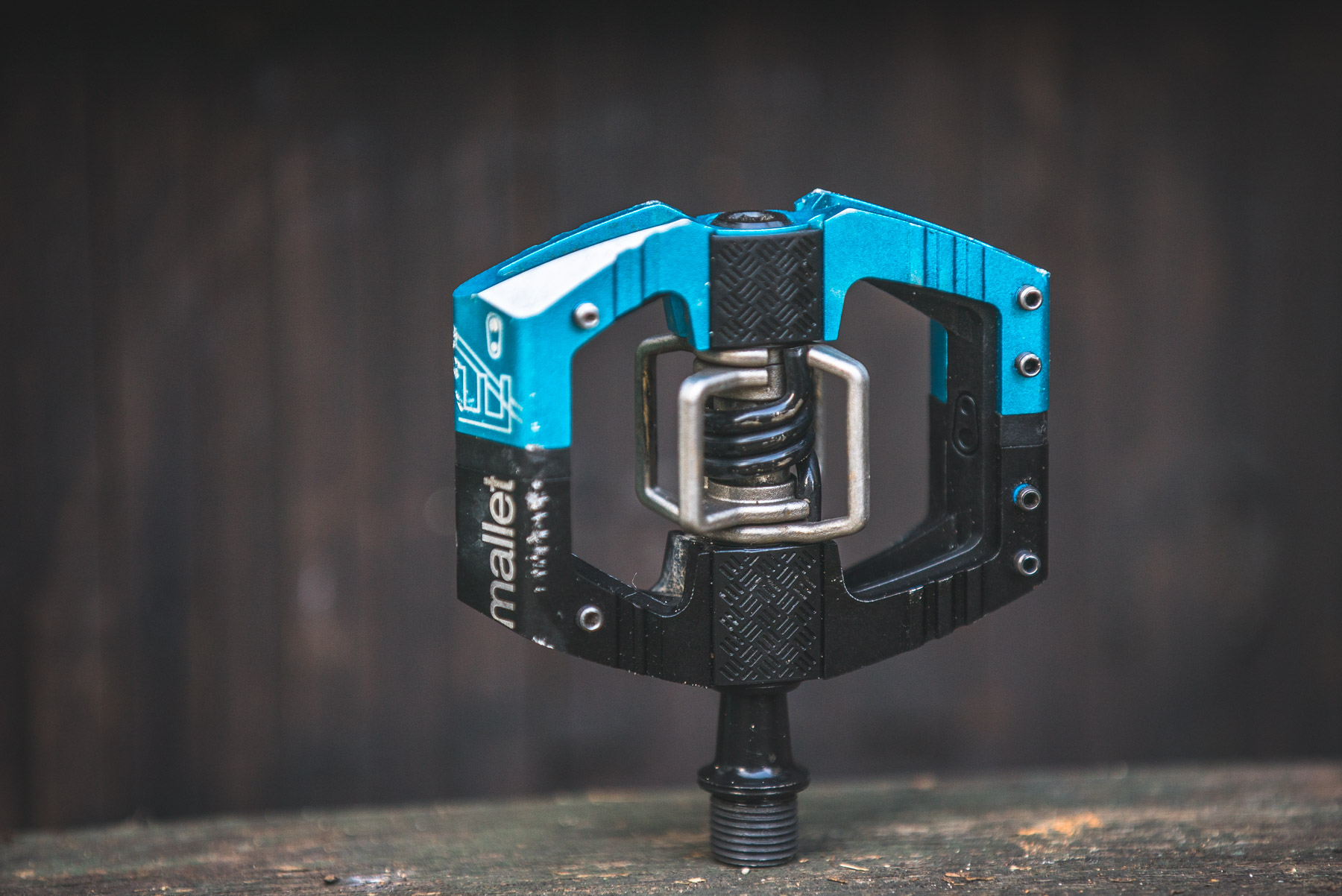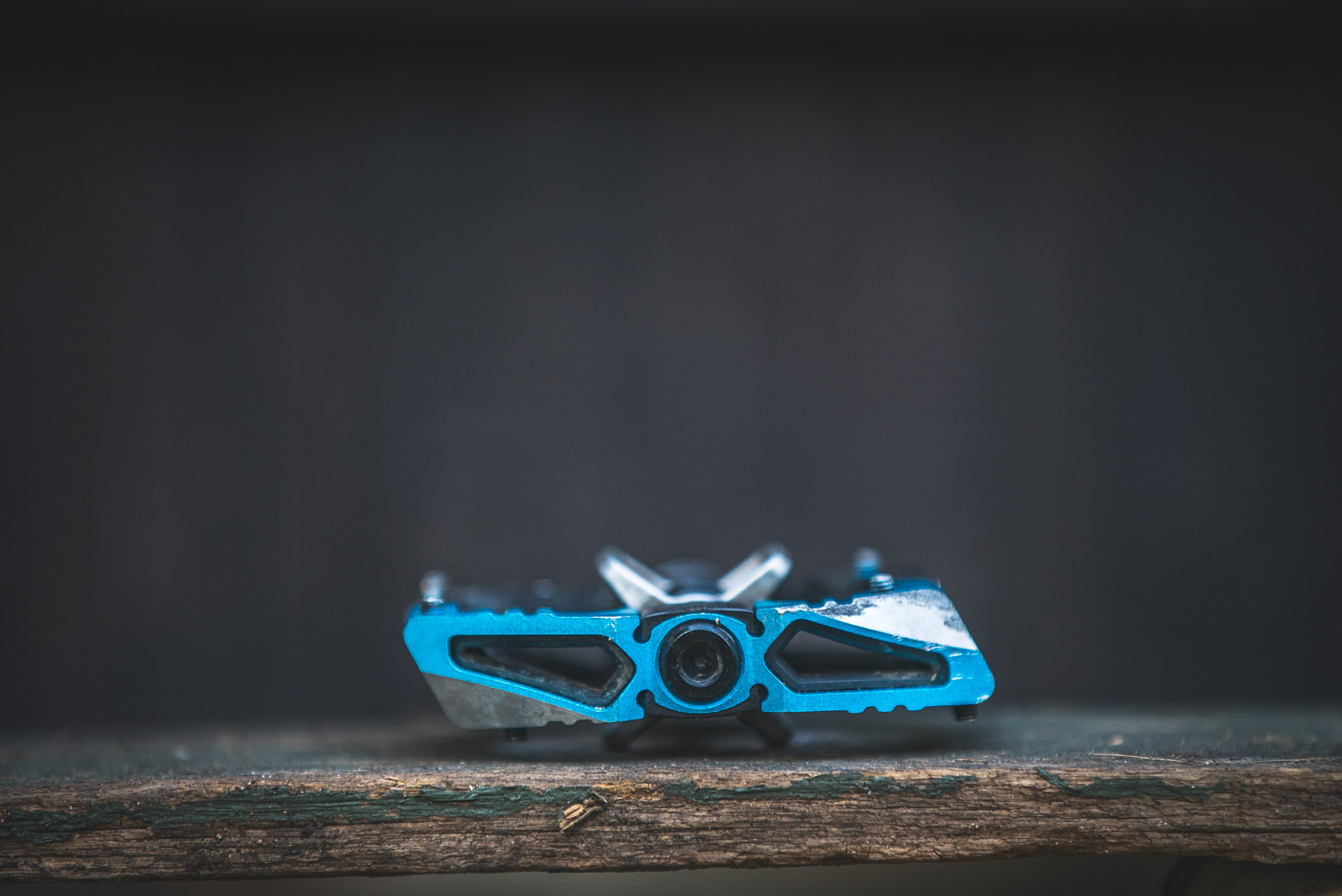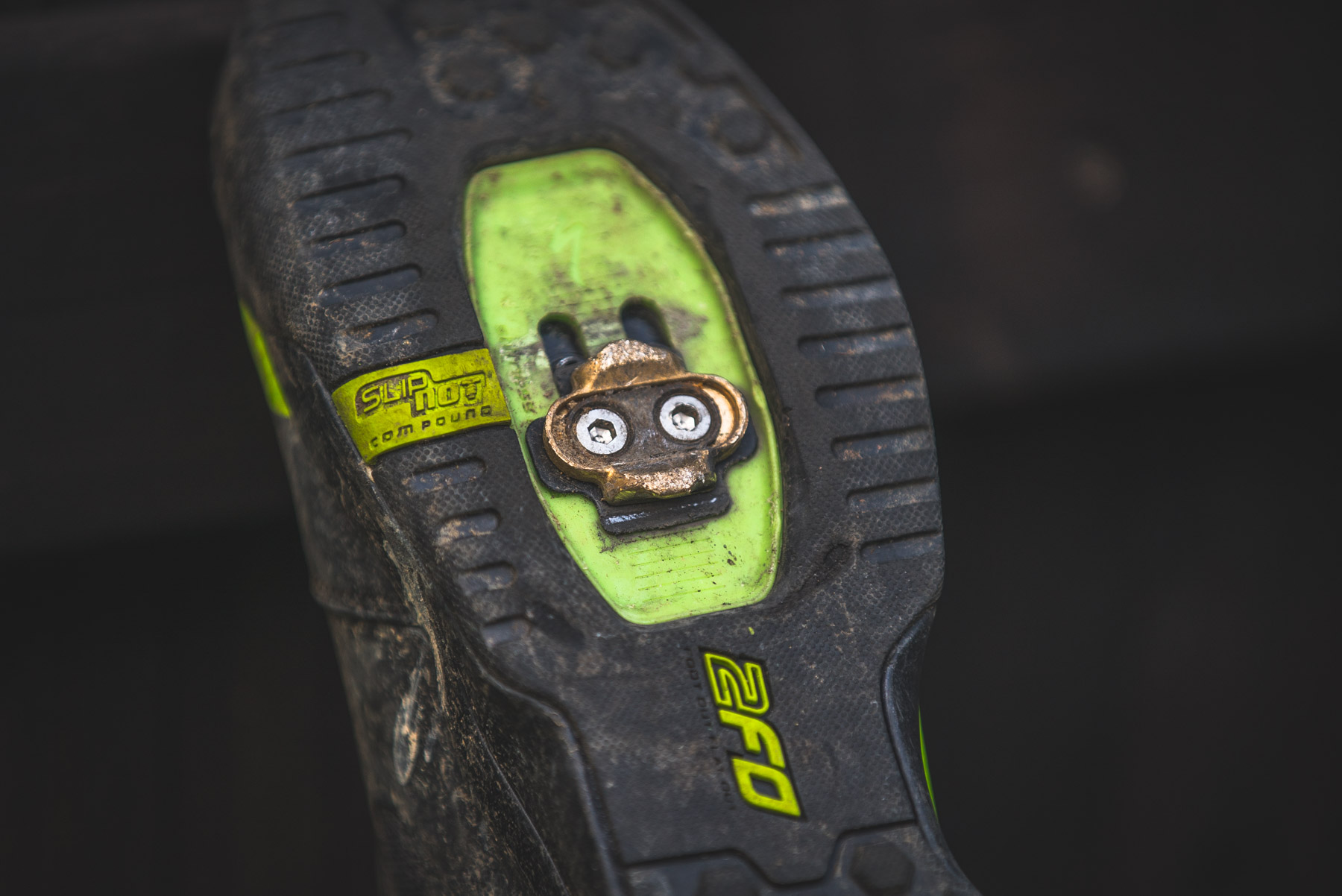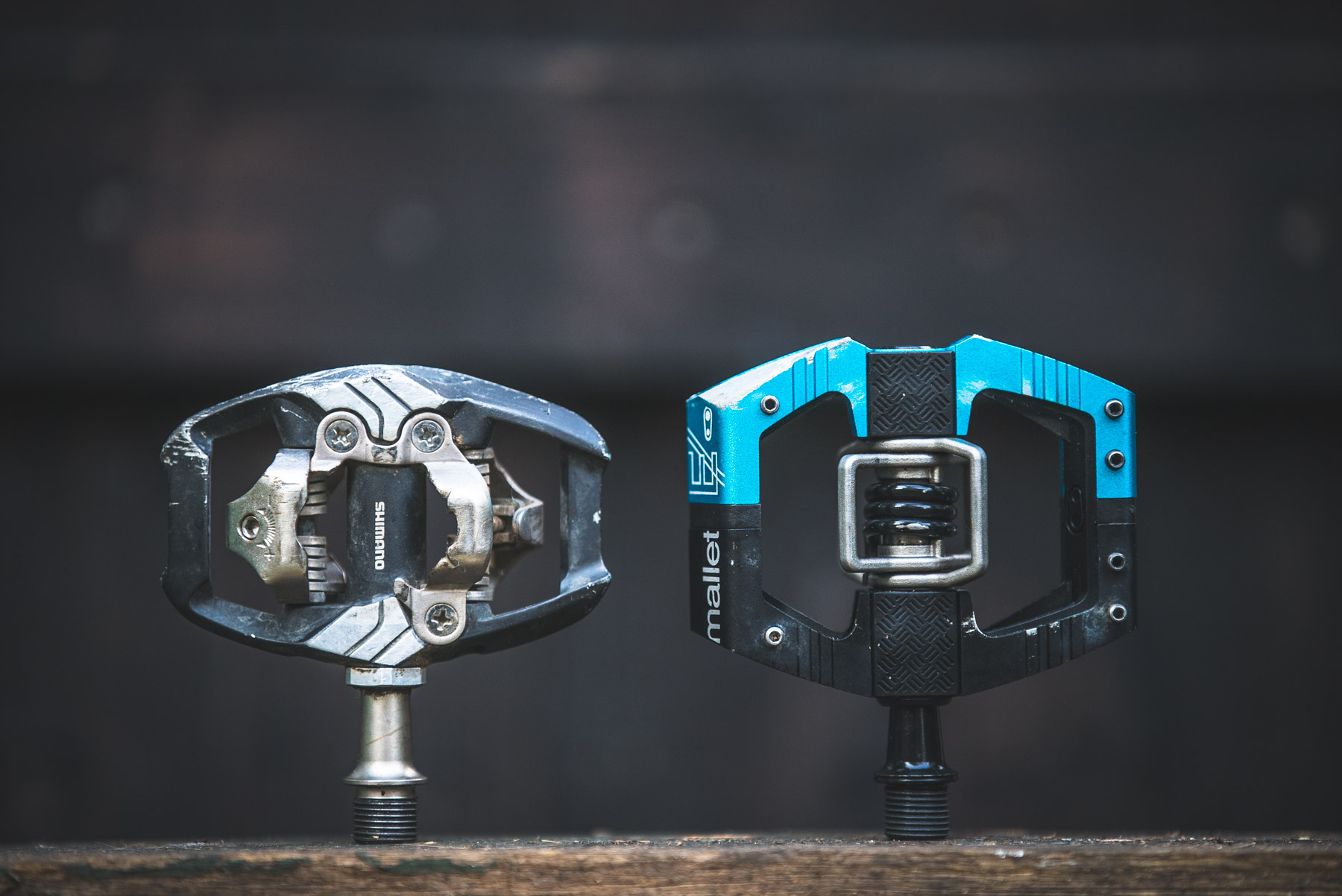
We’ve put two of the most popular ‘trail’ pedals on the market head to head: Shimano’s XT Trail and Crankbrothers’ Mallet E LS. As it turns out, the way they ride is very different, and both are excellent pedals overall in our opinion, so we’re sure you’ll find yourself happy with both options. But they do each have real highlights and lowlights.
Shimano XT Trail: 403g/pair, $179

Highlights:
Work perfectly without any fuss or faff on a huge variety of shoes and without needing any cleat shims or shoe modification.
Tension adjustability will be a boon for riders who really muscle the bike around through the pedals or who want to be really securely locked in.
Very positive and crisp engagement/release – you know when you’re in or out.

Lowlights:
Convex pedal body shape really doesn’t offer a lot of grip or support should you happen to miss a pedal entry.
While these latest versions are better in the mud than in previous iterations, they still are prone to collecting crap and becoming hard to engage in muddy, gloopy conditions.


Crankbrothers Mallet E LS: 430g/pair, $259

Highlights:
Large amounts of shoe/pedal contact gives you a feeling of support normally associated with using a flat pedal.
Concave body shape and grub screws offers decent traction should you miss a pedal entry.
Open design is resistant to mud to build up, making these pedals very consistent in the wet weather.


Lowlights:
Some shoes will require the use of cleat spacers to get these pedals performing properly.
Entry/exit is rather vague, and feels less precise than the Shimanos.

Overall:
We came into this comparison with our view slightly clouded by past experiences. We last tried Crankbrothers pedals during a dark patch in the brand’s history, when corners were cut and durability suffered. Partly because of this experience, we’ve tended to stick with Shimano over the past few years. We’ve always loved the consistent, crisp and precise feeling of the Shimano SPD mechanism, and the overall durability of the pedals has been a big drawcard too. As we’re regularly swapping shoes too, we’ve appreciated the ease of setup and how the pedals just seem to work well with almost any shoe on the market.

But the new Mallet E is a much better offering than in years past, and we can now really appreciate what so many people can see in these pedals.
The ride feel is certainly different to the snappy Shimanos. Whereas the XTs have you locked in and it takes a good consistent force to release them, it feels like you more gradually ease out of the Crank Bros. We’re still adapting to it.

We had figured the absence of tension adjustment on the Mallet’s would worry us, but it hasn’t been a consideration at all. Perhaps it’s because there’s so much shoe/pedal contact that you don’t rely solely on the pedal mechanism to keep your feet in place, so release tension is less of an issue. We’re also impressed by the support and grip of the Mallet’s too – the concave body shape makes a hell of a lot of sense for riding in conditions where you’re often clipping out and not always able to get back in straight away.

In truth, we’re now completely torn between the two brands and we’re going to continue to use both for the time being. In our minds, both are emerging as a great product, and they prove to us there’s no one right way of designing a pedal. Fence sitting isn’t popular, but to pick either of these pedals as being ‘better’ than the other would mean ignoring too many positive attributes of the other. Pay your money, make your choice, you’ll be happy.